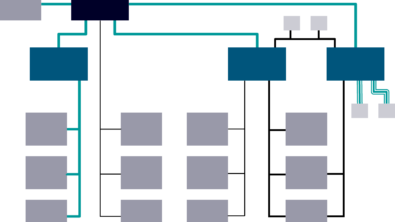Year-End Wrap-up for the Electronic and Electrical Systems Blog

As the year comes to a close, it’s the perfect time to look back at the standout Capital electronic and electrical systems blog posts of 2024. This year has been filled with groundbreaking innovations and pivotal industry shifts, and we have worked hard to reflect this through insightful articles and supportive material.
Join us in revisiting the most impactful posts that have informed and inspired our community over the past 12 months. Here’s to celebrating the achievements of 2024 and welcoming the opportunities of the new year. Happy New Year!

1. CAPITAL X Announcement: Discover the power that Siemens Capital X software as a service brings to E/E systems development
A standout innovation in 2024 was Siemens Capital X software as a service (SaaS) launch, a cloud-enabled suite for electrical and electronic (E/E) systems development. This blog post by Joseph Faulk highlights how Capital X brings unparalleled flexibility and connectivity to E/E systems engineering.
Capital X offers rapid provisioning for fast access without the need for downloads or installations. This means organizations can quickly scale their operations and support their entire team with the necessary resources for Capital workflows. Built on the robust Siemens Xcelerator Cloud platform, Capital X ensures top-notch security and support, making it a reliable choice for companies worldwide.
For those interested in the future of E/E systems development, check out our post, and click the button below to learn more about the benefits Capital X brings.
2. Airbus and Siemens: Siemens and Airbus take development to new heights at Farnborough airshow
As senior director of the aerospace and defense business for Siemens Lifecycle Collaboration Software division, Anthony Nicoli shared his experience at the Farnborough Airshow, an event showcasing the growing interest in digital transformation within the aerospace industry. Siemens and Airbus made a significant impact at the show, drawing attention to the surge in demand for solutions that enhance operational efficiency and speed.
This post emphasizes how Siemens’ advanced digital thread for commercial aircraft electrical design has been instrumental in Airbus’s success. This technology facilitates real-time data sharing, enhanced collaboration, and optimized workflows, significantly accelerating product development and improving quality.
3. Sustainability and the automotive wiring harness: Embracing a sustainable future through wiring harness design
Sustainability is a critical component for the future of the automotive and transportation industry. This blog post highlights the pivotal role sustainability plays for automotive engineers at leading OEMs, driven by regulatory compliance, consumer and investor demand, and risk mitigation.
The post delves into the rapidly evolving regulatory landscape, emphasizing the need for businesses to report and reduce carbon emissions. With regulations like the EU’s Corporate Sustainability Reporting Directive and the US SEC’s climate-related disclosures, companies must adapt to stay compliant.
4. E/E Architecture series: E/E architecture diagrams demystified
The introduction to Brendan Morris’ series set out to answer some common questions about E/E architecture diagrams, their meanings, and how to read them. It also explored the history, trends, and enabling technologies behind them, providing links to further resources.
The series this post kicked off covered how E/E architects use these diagrams to map out vehicle systems, from ECU connections to signal routings. It also looked into the importance of digital connections for maintaining accuracy.
5. Heavy Equipment and Off-road network design: Heavy Equipment electrification and the pivotal role of network design
Finally, our wrap up concludes with a look at the heavy equipment and off-road industry’s electrification challenges. The blog post highlights the critical role of robust network design in supporting increased electrification, enabling seamless operations, real-time data exchange, remote monitoring, and predictive maintenance.
The post emphasizes two key areas for network designers: early verification in the design process and ensuring digital continuity across all phases of design. Early verification helps identify and fix potential issues before they escalate, ensuring network performance meets high standards and reducing costly rework. This proactive approach also enhances safety and sets the stage for future innovations like 5G connectivity and AI-driven analytics.
As we conclude this year’s posts, stay tuned for more in-depth discussions on the history, trends, and enabling technologies of E/E development in 2025. Together, we can drive the future of innovation, paving the way for smarter, safer, and more sustainable solutions.


